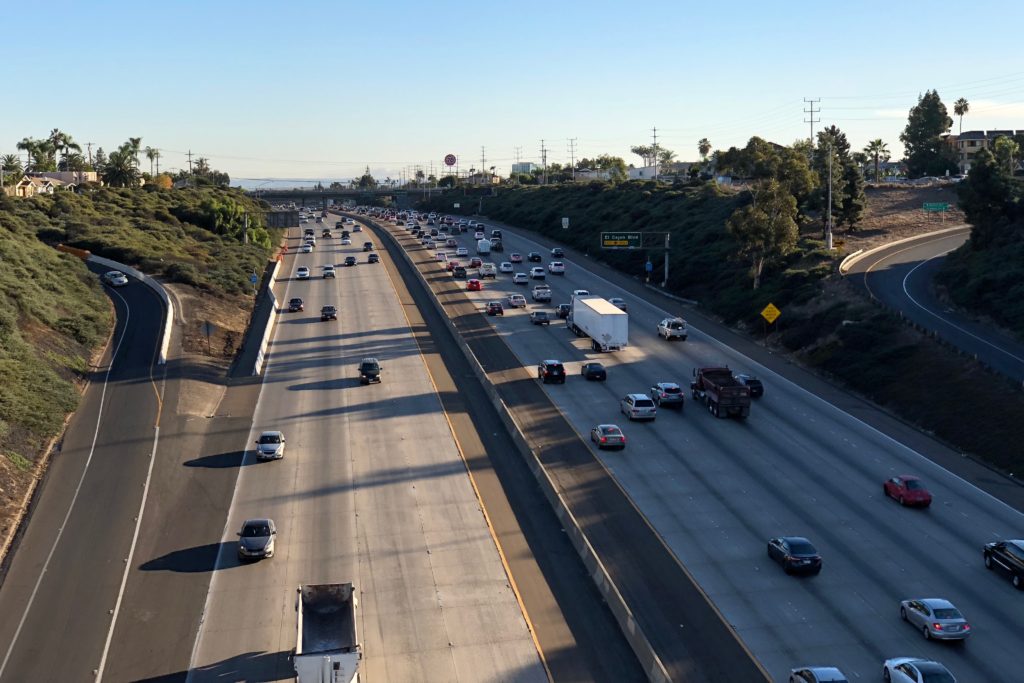Approaching rush hour on 805 marks my walk along Adams Ave. above to Pet Me Please, where I learned a valuable lesson. Always call ahead. I used Siri to check normal business hours, but there were none. A sign on the door announced that the shop would be (uncharacteristically) closed today because of the “Lilac wildfire“. Well, frak me. At least I got some good exercise and shot of slowing traffic.
I captured the Featured Image at 3:16 p.m. PST, through a small opening in the overpass bridge chain-link fence, using iPhone X. Vitals: f/2.4, ISO 16, 1/810 sec, 6mm. The image is an auto-generated HDR composite.
Tech reviewers rave about Pixel 2 XL’s photographic charms; they can have Google’s smartphone. I am wholly impressed with Apple’s tenth anniversary handset, which is a suprisingly super shooter compared to my (now discarded) 7 Plus—or any other cellular mobile to find its way into my grubby paws.
Benefit 1: I can actually see the screen—meaning it ain’t washed out—when composing shots in bright sunlight; there’s way too much of it here in three-season San Diego (early, mid, and late summer).
Benefit 2: Autofocus is quick and precise most of the time.
Benefit 3: Photos are vibrant, with rich color depth—and (perhaps) a little punctuation—that fairly accurately reflects what my eyes see.
Benefit 4: White balance and contrast consistenly please, and the latter can challenge cameras when there are striking areas of light and shadow.
Benefit 5: Portrait mode makes clarity and contrast pop; the feature is much more than blurring backgrounds to add bokeh. It looks more realistic to my eyes than what 7 Plus produces.
Benefit 6: The two-camera mechanism uses the second to give 2X zoom, and I use it frequently—more so on the X than the 7 Plus.
Benefit 7: (This one is true on previous Plus models) The f/1.8 main camera lens is roughly equivalent to 28mm full frame—exactly what my Leica Q is. Composing is similiar in both, although the Q shoots 3:2 aspect ratio (my preferred) and the X 4:3.
Limitations are similiar to other smartphones—all with relatively small sensors. This photo is good example. Detail rapidly recedes as you zoom to 100 percent; my Leica Q wouldn’t suffer this malady. That said, the basics are fairly balanced—from exposure to contrast to highlights and more.
Most importantly, I enjoy shooting with iPhone X. It is satisfying and makes me want to compose and capture. Image quality will never match Leica Q, but the X is worthy nevertheless. Two words, which I wouldn’t apply to any other smartphone shooter: convenience and consistency.
